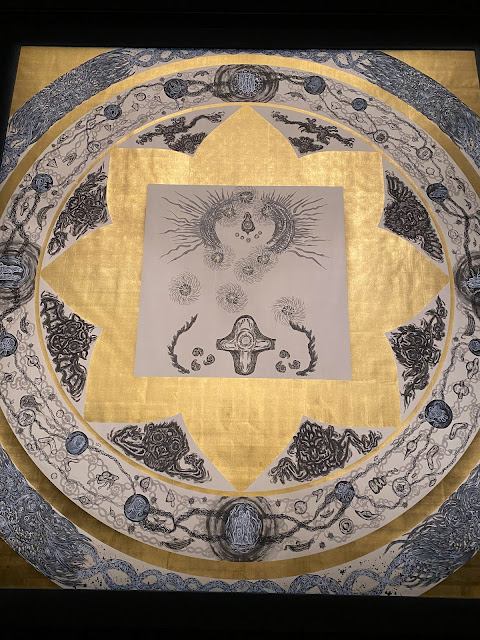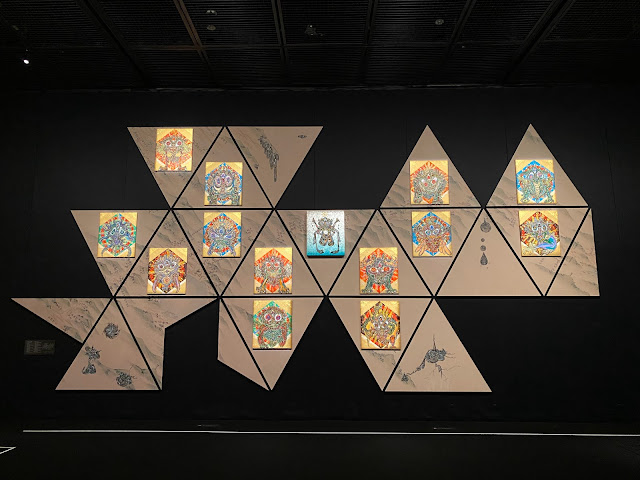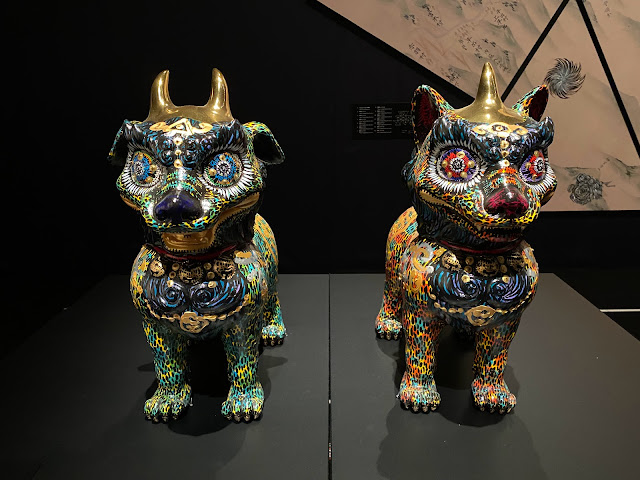小松美羽展 岡本太郎に挑む―霊性とマンダラ(川崎市立岡本太郎美術館) Miwa Komatsu, Challenge Taro Okamoto - Spirituality and Mandala (Taro Okamoto Museum of Art)
川崎にある岡本太郎美術館で行われた、小松美羽の展覧会。
小松美羽は、1984年に長野県で生まれ、幼い頃からスピリチュアルな感覚を持っていたようで、霊性が多分に感じられる作品や、高野山や東寺に奉納する宗教的な作品などを描いている。
副題に”岡本太郎に挑む”とあるが、小松美羽と岡本太郎の作品を並べた展示もあった。
岡本太郎も沖縄や東北の不思議な民俗や宗教などに興味を持っていたが、岡本の興味はフランスに留学してモースに学んだ学問的な文化人類学に基づくもので、小松美羽の個人的な体験に基づいたスピリチュアルな感覚とは少し違うのではないか。
小松の作品は、原色や金色を使ったカラフルでダイナミックな構成の作品が多い。
小松は幼い頃から自分の近くに山犬(オオカミ)の存在を感じていたようで、その山犬は小松の作品に頻繁に登場する。
日々、瞑想や祈りを捧げているという小松だが、描かれている山犬はややユーモラスな印象受け、現代のカワイイ文化の影響を受けているのかもしれない。
それ以外のテーマの作品にも、描かれている深遠なテーマにも関わらず、いい意味でなのかもしれないがある種の軽みを感じてしまった。
An exhibition of Miwa Komatsu at the Taro Okamoto Museum in Kawasaki.
Miwa Komatsu was born in Nagano Prefecture in 1984 and seems to have had a spiritual sense since she was young.
Although the subtitle is "challenging Taro Okamoto," there was also an exhibition that displayed the works of Miwa Komatsu and Taro Okamoto.
Taro Okamoto was also interested in the mysterious folk customs and religions of Okinawa and Tohoku, but Okamoto's interest was based on the academic cultural anthropology he studied under Morse when he studied in France. Is it not a little different from the spiritual sense based on the experience?
Many of Komatsu's works have colorful and dynamic compositions using primary colors and gold.
Komatsu seems to have sensed the existence of a wild dog (wolf) near her from an early age, and the wild dog frequently appears in Komatsu's works.
Komatsu says she meditates and prays every day, but the wild dog in her painting gives a slightly humorous impression, perhaps influenced by modern kawaii culture.
I felt a kind of lightness, perhaps in a good way, in spite of the profound themes depicted in her other thematic works.










コメント
コメントを投稿